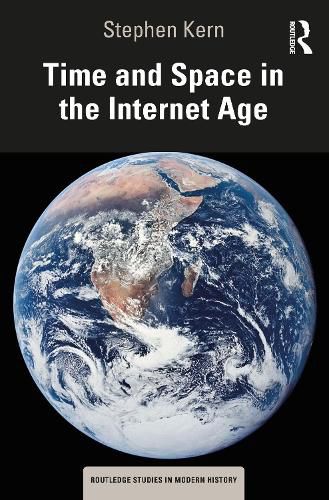Readings Newsletter
Become a Readings Member to make your shopping experience even easier.
Sign in or sign up for free!
You’re not far away from qualifying for FREE standard shipping within Australia
You’ve qualified for FREE standard shipping within Australia
The cart is loading…






This book analyzes how new technologies transformed life and thought between two periods, 1880-1920 and 1980-2020, with a focus on temporal experiences of past, present, future and the spatial experiences of form, distance, and direction.
The signature contrast is between experiences of time and space transformed by the telephone in the earlier period and the Internet in the later period along with other sharp contrasts: the sinking of the Lusitania in 1915 and the attack on the World Trade Center on 9/11, World War I and the Gulf Wars, gravity bombs and smart bombs, the pandemics of 1918 and 2020, assembly lines and flexible production, Farmer's Almanacs and computer-based weather predictions, cash transactions and one-click ordering, decolonization and globalization, internationalism and planetarity. The book also makes three interpretive arguments: the Epistemological Argument covers how greater knowledge introduced uncertainties; the Ethical Argument tracks how new technologies prompted ethical judgments about their value; and the Re-hierarchizing Argument tracks the erosion of spatial hierarchies most notably in religion, society, and politics with the increasing progress of secularization, social mobility, and democratization.
Time and Space in the Internet Age is a thought-provoking study for academics and general readers interested in the history of technology and science.
$9.00 standard shipping within Australia
FREE standard shipping within Australia for orders over $100.00
Express & International shipping calculated at checkout
This book analyzes how new technologies transformed life and thought between two periods, 1880-1920 and 1980-2020, with a focus on temporal experiences of past, present, future and the spatial experiences of form, distance, and direction.
The signature contrast is between experiences of time and space transformed by the telephone in the earlier period and the Internet in the later period along with other sharp contrasts: the sinking of the Lusitania in 1915 and the attack on the World Trade Center on 9/11, World War I and the Gulf Wars, gravity bombs and smart bombs, the pandemics of 1918 and 2020, assembly lines and flexible production, Farmer's Almanacs and computer-based weather predictions, cash transactions and one-click ordering, decolonization and globalization, internationalism and planetarity. The book also makes three interpretive arguments: the Epistemological Argument covers how greater knowledge introduced uncertainties; the Ethical Argument tracks how new technologies prompted ethical judgments about their value; and the Re-hierarchizing Argument tracks the erosion of spatial hierarchies most notably in religion, society, and politics with the increasing progress of secularization, social mobility, and democratization.
Time and Space in the Internet Age is a thought-provoking study for academics and general readers interested in the history of technology and science.